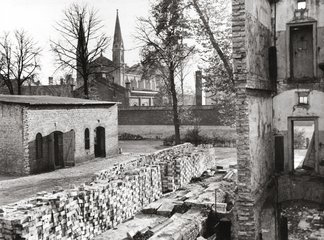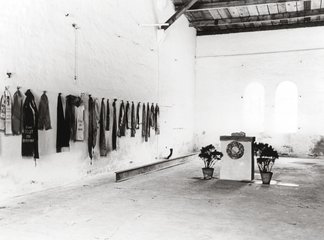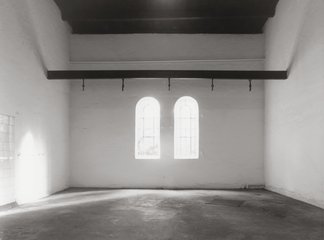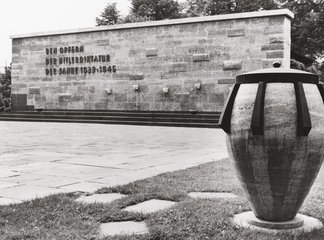The first photo shows the Plötzensee prison chapel and the former execution shed. The destroyed House III, the “House of the Dead,” is visible in the foreground. On February 17, 1937, a guillotine from Bruchsal prison was installed in the shed, which had originally been used for storage or as a workplace. From then on, executions took place in this single-story brick building. The condemned prisoners spent the last hours before their murder in House III, which was destroyed by air raids during the war and demolished after 1945.
A stone panel was installed in the former execution room after the war to mark the former position of the guillotine. The steel beam used to hang prisoners had not yet been reinstalled.
Plötzensee Memorial Center was partly redesigned in 1964 to mark the twentieth anniversary of the attempted coup of July 20, 1944. This overhaul attempted to restore the execution room to its original state as far as possible. Elements that had been added subsequently, such as the commemorative panel, were removed. The memorial center has been a protected site since July 20, 1987.
In his 1951 plans, the architect Bruno Grimmek placed a commemorative wall in front of the former execution shed. The wall was almost twenty meters long and six meters high, and made of volcanic tuff blocks. The result was a spatial boundary to the courtyard where the commemorative events were held.
In May of 1956, the West Berlin senate also decided to erect a stone casket in the Plötzensee Memorial Center which would contain earth from various concentration camps. It was inscribed “Dedicated to the victims of the concentration camps, in reverent commemoration.” Remembrance of those murdered in Plötzensee was thus linked to commemoration of the victims of the National Socialist genocide.




